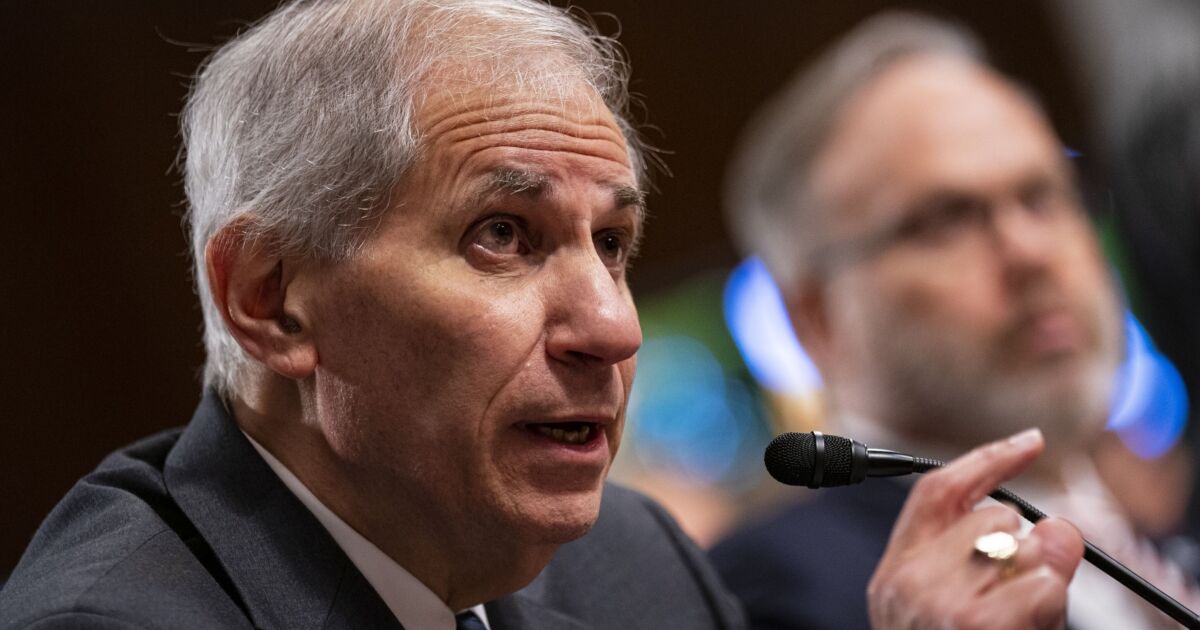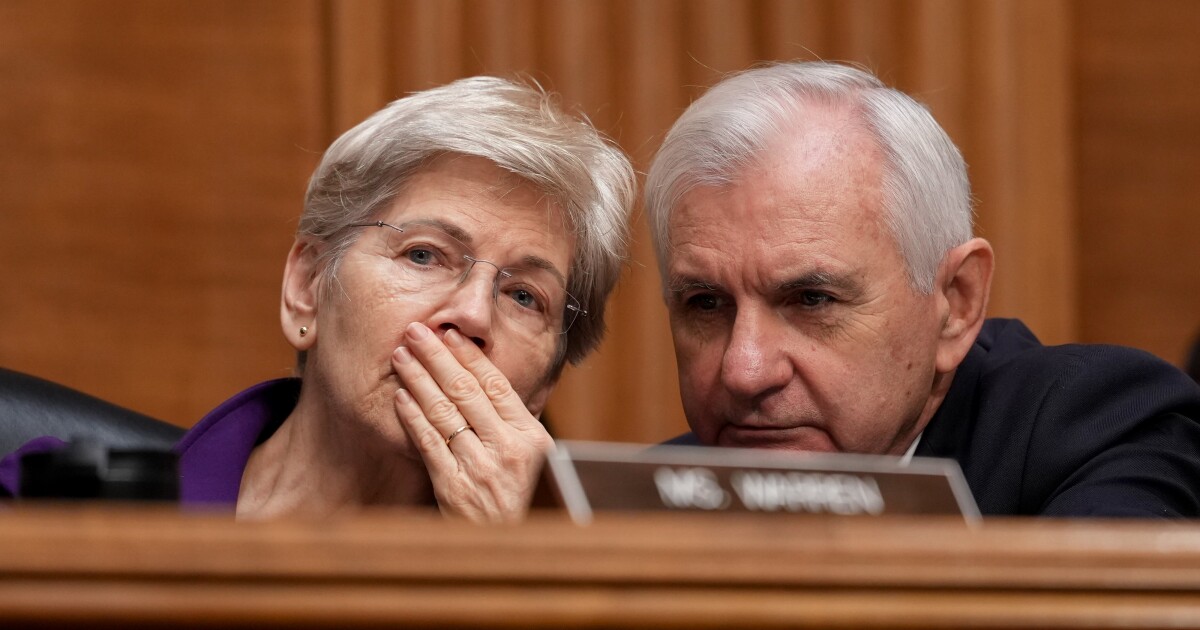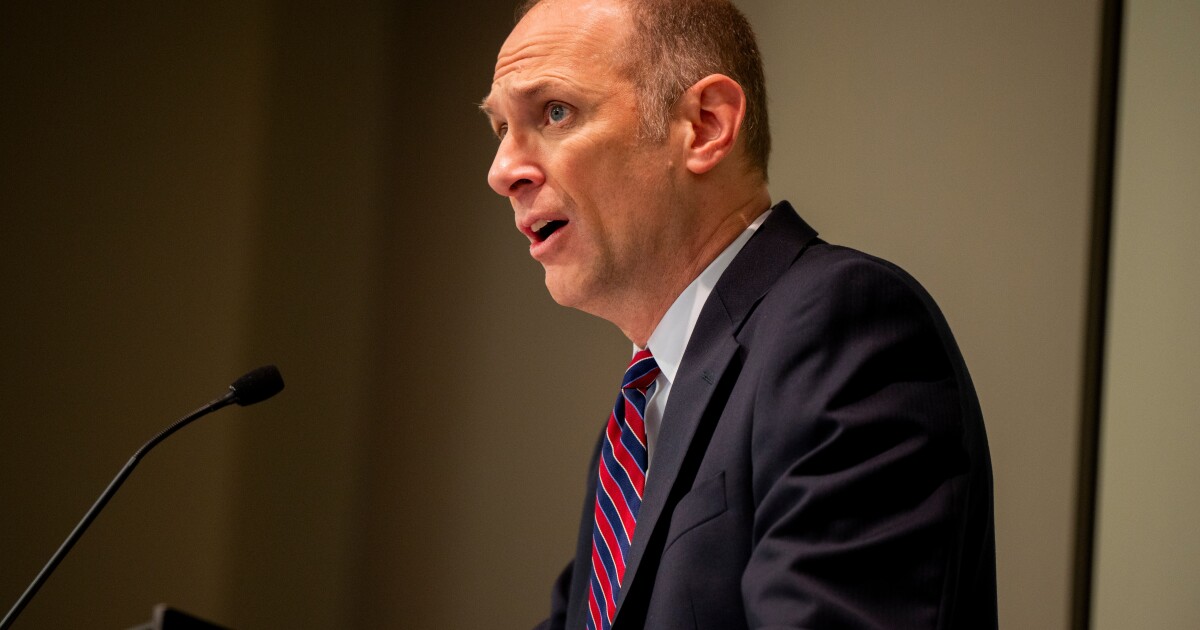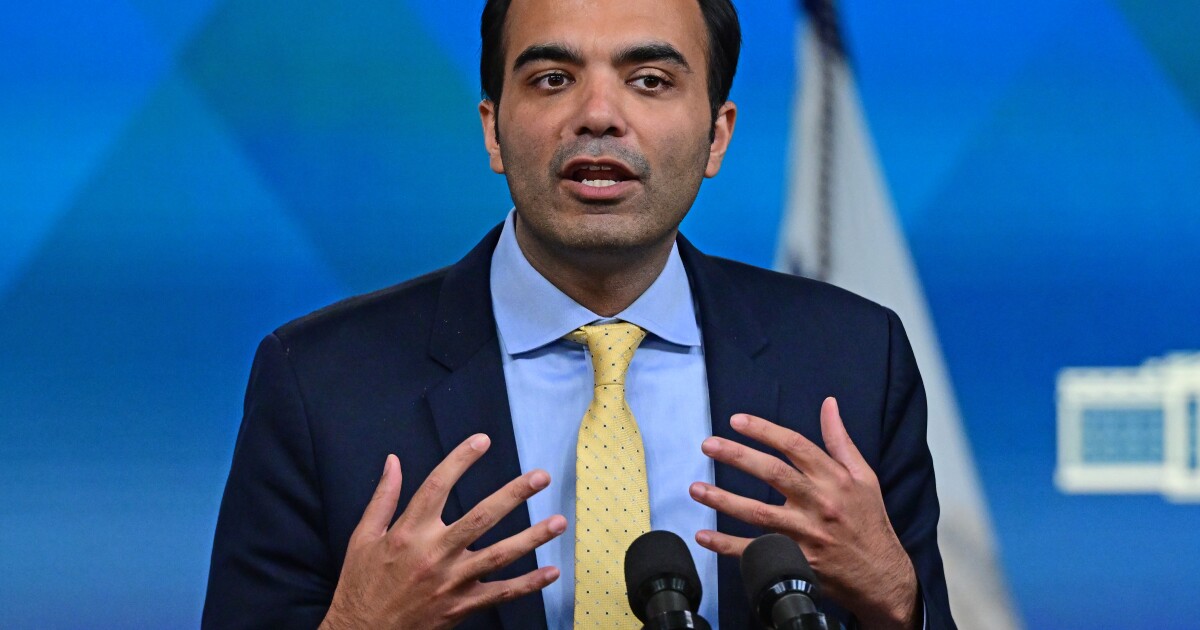
WASHINGTON — Data released by the Federal Deposit Insurance Corp. Wednesday put into stark relief the toll that the dicey economic conditions of the last year have taken on the banking industry, and the agency warned that dwindling commercial real estate values and other risks pose threats.
Banks reported third-quarter net income of $68.4 billion, down 3.4% from the prior quarter and 4.6% from the third quarter of 2022, according to the latest Quarterly Banking Profile. Higher loan-loss provisions, realized losses on securities and a decline in noninterest income were among the causes.
To be sure, excluding some one-time factors tied to the bank failures in the spring, net income has hovered around $68 billion — well above the pre-pandemic average — for the past four quarters
Yet FDIC Chairman Gruenberg cautioned that the banking industry continues to stare down significant risks stemming from inflation, higher interest rates and geopolitical turbulence.
“These issues could cause credit quality, earnings and liquidity challenges for the industry,” Gruenberg said. “In addition, deterioration in the industry's commercial real estate portfolio is beginning to materialize in office properties in which weak demand for space, softening property values and higher interest rates are affecting the credit quality of underlying loans.”
Net interest margins at FDIC-insured depository institutions modestly rebounded after falling the previous two quarters, increasing three basis points to 3.30% from the previous quarter. The FDIC attributed this uptick to the stabilization in the cost of nondeposit liabilities in the third quarter as deposit costs increased at a faster rate than loan yields.
The banking industry's net interest margin increased by 16 basis points compared with the year-earlier quarter and remains above the pre-pandemic average of 3.25%.
The Deposit Insurance Fund balance sat at $119.3 billion as of Sept. 30 of this year, a $2.4 billion increase from the end of the previous quarter. The reserve ratio — which compares the DIF balance to systemwide insured-deposit levels — increased by two basis points this quarter to 1.13% due to a 0.1% increase in insured deposits.
Gruenberg noted in a statement the reserve ratio is on track to reach the 1.35% statutory minimum reserve ratio by the legally binding deadline of Sept. 30, 2028.
The FDIC established a DIF restoration plan in September of 2020 in order to bring the ratio back up to the 1.35% statutory minimum level by September 2028 after the fund fell 9 basis points between the first and second quarter of 2020 after an unprecedented surge in deposits during the pandemic. Congress mandated in the Dodd-Frank Act of 2010 that the agency maintain reserves of 1.35% of estimated insured deposits.
Domestic deposits declined for the sixth consecutive quarter even with a slowdown in the outflows which began in the first quarter as banks were failing. Liquid assets across the industry fell this quarter as banks pared down securities portfolios.
Total loan and lease balances rose 0.4%, or $45.9 billion, from the previous quarter. That included a notable uptick in credit card loans — up 2.5%, or $25.9 billion — and one-to-four family residential mortgages — up 0.9%, or $23.1 billion. In comparison to the third quarter of 2022, total loan and lease balances grew $343 billion, or 2.9%. However, the FDIC noted the increase reflects a moderation in the 12-month growth rate compared with the previous quarter's 4.5% increase.
For community banks, third-quarter net income declined by 4.7% from the prior quarter as elevated losses on securities sales and higher noninterest expenses ate away at any gains smaller firms accrued from higher noninterest income. Community bank net interest margins declined for the third consecutive quarter due to sluggish earning-asset yields.
The FDIC noted that unrealized losses on available-for-sale and held-to-maturity securities swelled to $683.9 billion this quarter, as higher mortgage and other rates depleted market values for debt.
Gruenberg said that total noncurrent commercial real estate loans on properties not occupied by their owners increased 36.4% from the previous quarter to their highest level since the third quarter of 2014.
“Deterioration in the industry’s commercial real estate portfolio is beginning to materialize in office properties, in which weak demand for space, softening property values and higher interest rates are affecting the credit quality of underlying loans,” he said.
High interest rates also threaten many commercial properties, he added, because as fixed-rate loans mature, they will need to be renewed in the now comparatively much higher interest rate environment.
“These issues, together with funding and earnings pressures, will remain matters of ongoing supervisory attention by the FDIC,” said Gruenberg.



